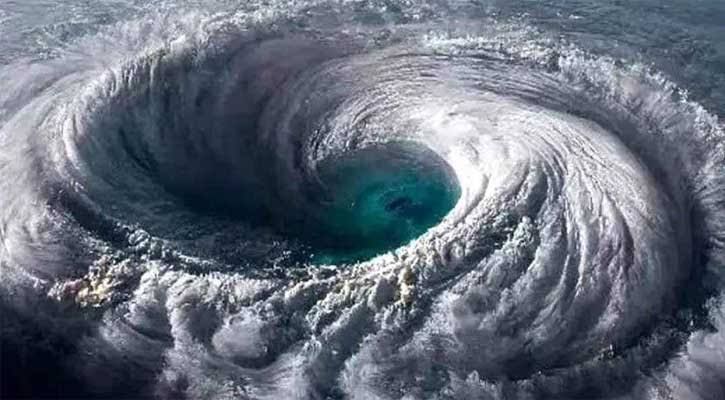
Bismillaher Rahmanir Rahim.
Assalamu Alaikum Wa Rahmatullahi Wa Barakatuhu
Dear Companions Today I want to share with you some words about the evils of killing foetuses.Welcom to this post and congratulations to all
A cyclone is a large-scale atmospheric disturbance characterized by rotating winds spiraling inward around a low-pressure center. It’s a common term for different types of storms, such as hurricanes, typhoons, or tropical cyclones, depending on the region and characteristics. Cyclones can form over warm tropical waters, and their strength, scale, and impact can vary greatly. In this detailed discussion, we’ll explore how cyclones are formed, the mechanics of their development, their lifecycle, and their potential harmful effects.
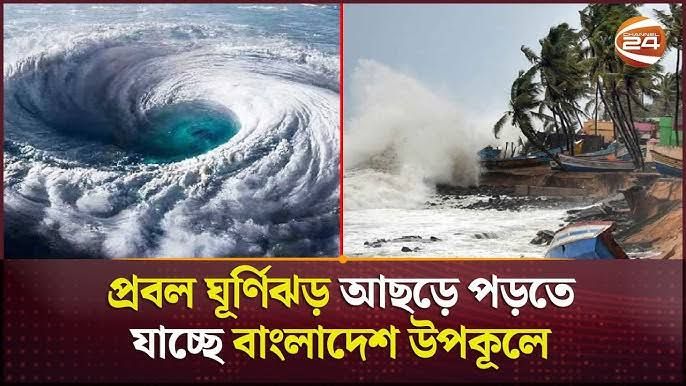
source
Formation of a Cyclone
Cyclones typically form in tropical regions where sea surface temperatures are warm (above 26°C or 79°F). These warm waters are crucial because they provide the necessary heat and moisture for the formation of a cyclone. The process of cyclone formation involves several key stages:
Warm Ocean Waters: The primary energy source for cyclones is the heat from the ocean. Warm seawater causes evaporation, sending moisture-laden air upward into the atmosphere. As the moist air rises, it cools and condenses into clouds, releasing latent heat, which fuels further uplift.
Convergence of Winds: Winds from surrounding areas converge into the low-pressure zone, which is created as warm air rises. This convergence is critical because it increases the amount of moisture entering the system.
Coriolis Effect: The Earth's rotation causes the air moving into the low-pressure zone to start spinning. This effect, called the Coriolis force, gives cyclones their characteristic circular motion. The Coriolis effect is stronger near the equator, which is why most cyclones form in tropical latitudes between 5° and 30°.
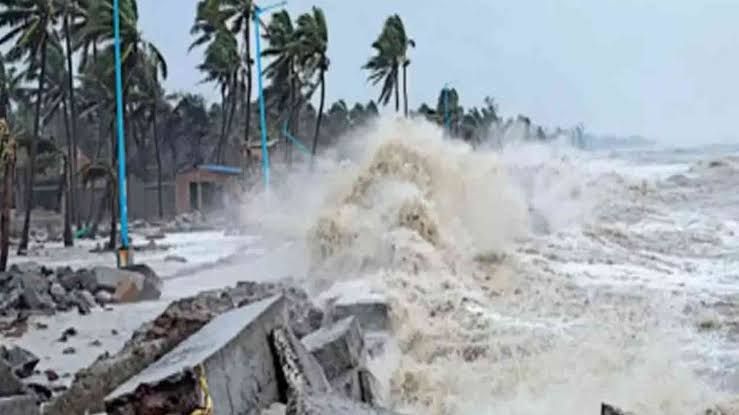
source
Development of a Low-Pressure Center: As warm, moist air continues to rise, it cools and condenses, forming clouds and releasing more heat. This creates a cycle where air keeps rising, and a central core of low pressure forms, around which the winds begin to rotate faster.
Formation of the Eye: In mature cyclones, a well-defined "eye" can form at the center. This is a region of relatively calm weather, with clear skies and light winds, surrounded by the eye wall, which contains the most intense weather, including the heaviest rains and strongest winds.
How a Cyclone Strengthens
Once formed, a cyclone can strengthen if certain atmospheric conditions are favorable. The following factors contribute to the intensification of a cyclone:
Uninterrupted Access to Warm Water: As long as the cyclone remains over warm water, it continues to draw energy. The heat from the ocean causes more moisture to evaporate, which fuels the system.
Minimal Wind Shear: Wind shear refers to the change in wind speed and direction with altitude. Low wind shear is critical for cyclone development. High wind shear can disrupt the vertical structure of the cyclone, weakening it by dispersing the rising air.
High Humidity in the Troposphere: The availability of moisture in the atmosphere, especially in the mid-levels of the troposphere, supports cloud formation and intensifies the storm.
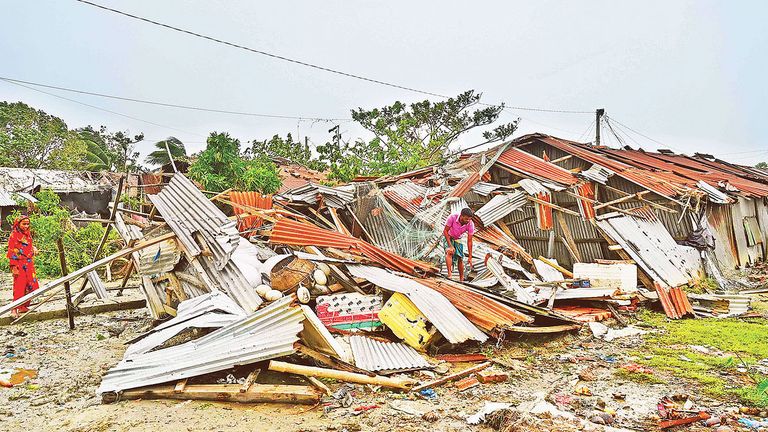
source
Inflow of Moisture and Outflow of Air: For a cyclone to strengthen, the inflow of moist air at lower levels needs to be matched by the outflow of air at higher altitudes. A well-developed outflow allows the cyclone to grow in size and strength.
The Lifecycle of a Cyclone
The lifecycle of a cyclone can be divided into four main stages: formation, intensification, maturity, and decay.
Formation: The cyclone begins as a tropical disturbance, where clusters of thunderstorms and clouds develop in a region of low pressure. The system begins to rotate and organize as the Coriolis effect influences its movement.
Intensification: As the storm continues to draw energy from warm waters, it intensifies. The pressure at the center drops, and wind speeds increase, often reaching tropical storm status. If the winds exceed 74 miles per hour (119 km/h), the system is classified as a cyclone, hurricane, or typhoon, depending on its location.
Maturity: During its mature phase, the cyclone reaches peak intensity. The storm's eye becomes well-defined, and the eye wall – the region around the eye – experiences the most violent weather. Rainfall is heaviest, and winds are strongest in this region.
Decay: A cyclone begins to weaken when it moves over land or cooler waters, both of which cut off the energy supply. As the system loses its source of heat and moisture, the winds diminish, and the pressure at the center begins to rise. The storm gradually weakens and eventually dissipates.
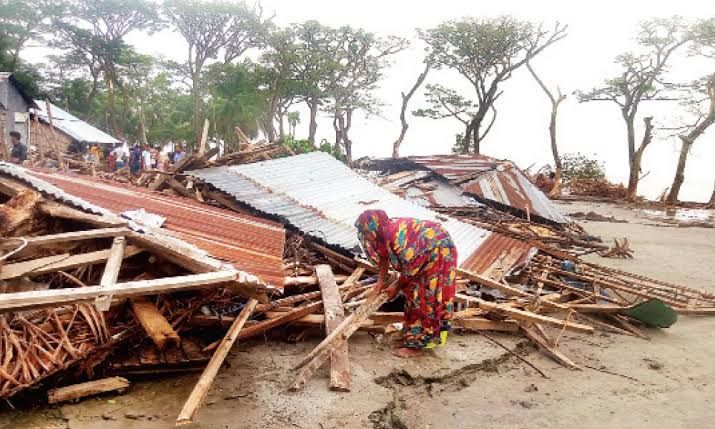
source
How a Cyclone Falls Apart (Dissipation)
Cyclones weaken and dissipate for several reasons:
Landfall: When a cyclone makes landfall, it loses access to the warm ocean waters that provide its energy. Friction from the land surface also disrupts the cyclone's circulation, causing it to weaken. After landfall, the system usually begins to fall apart over a period of hours or days.
Cooler Waters: As a cyclone moves into cooler waters, its energy source diminishes, causing it to lose strength. Without sufficient warmth, the system can't sustain the strong convection currents that drive it.
Increased Wind Shear: Strong vertical wind shear can tear apart the structure of a cyclone, reducing its ability to maintain its strength. Wind shear essentially tilts the cyclone, weakening its core and disrupting the organized rotation of air.
Dry Air Entrapment: If dry air gets entrained into the cyclone, it reduces the availability of moisture. Since moisture is a critical component for sustaining the system, this causes the cyclone to weaken and dissipate.
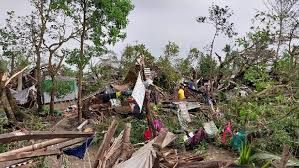
source
Harmful Effects of Cyclones
Cyclones can be devastating, causing widespread damage and loss of life. The harmful effects of cyclones include:
Storm Surges: One of the most dangerous aspects of a cyclone is the storm surge – a rise in sea level caused by the cyclone's winds pushing water toward the shore. Storm surges can flood coastal areas, leading to widespread destruction, particularly in low-lying regions. These surges can inundate large areas, damage infrastructure, and cause loss of life.
Heavy Rainfall and Flooding: Cyclones are associated with torrential rains, which can lead to severe flooding. Even after a cyclone has made landfall and its winds have weakened, heavy rainfall can persist for days, overwhelming rivers, and drainage systems. Flash floods are common during cyclones and can be life-threatening.
Strong Winds: Cyclones are known for their destructive winds, which can reach speeds of over 150 mph (240 km/h) in extreme cases. These winds can cause massive structural damage, uproot trees, destroy homes, and knock down power lines, leading to widespread power outages.
Landslides: In hilly or mountainous regions, the intense rainfall from cyclones can trigger landslides, which can bury homes, roads, and people. Landslides can isolate communities, making rescue and relief efforts more difficult.
Damage to Infrastructure: Cyclones can severely damage essential infrastructure, including roads, bridges, power grids, and communication systems. This can cripple an affected region’s ability to respond to emergencies and delay recovery efforts.
Economic Impact: The economic toll of cyclones can be staggering. The destruction of property, loss of livelihoods (especially in agriculture and fishing communities), and the costs of rebuilding can set back economies for years.
Loss of Life: The most tragic consequence of cyclones is the loss of human lives. People can be killed by flooding, landslides, collapsing buildings, and flying debris during the storm.
source
Cyclones are powerful natural phenomena with the potential to cause widespread destruction. Their formation is driven by the interaction between warm ocean waters, atmospheric conditions, and the Earth’s rotation. While they bring needed rainfall to some regions, the harmful effects of cyclones, including storm surges, flooding, and strong winds, can result in significant loss of life and damage to property. Understanding cyclones better allows us to prepare more effectively for these destructive storms and minimize their impact on vulnerable populations.